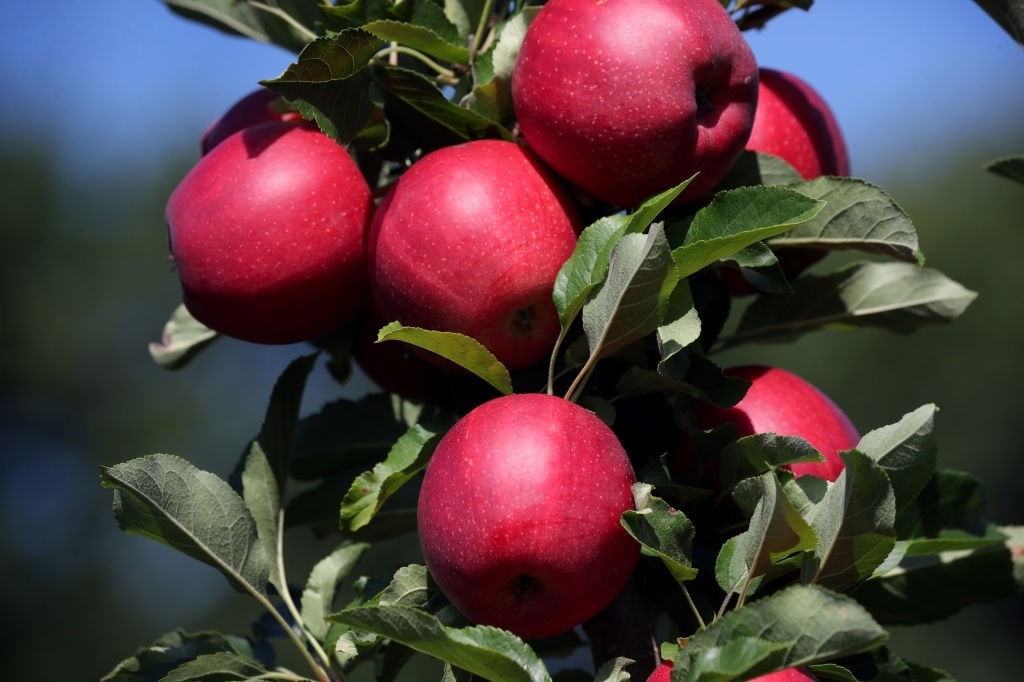Evidence of chemical threats to human health from contaminated foods has grown in recent decades. Planning a healthy path through the labyrinth of grocery ingredient labels is a challenge. As Americans celebrate their favorite annual holiday of Thanksgiving, a few guidelines about food choices will help set a healthy table.
Planning a Healthy Meal
Traditional Thanksgiving includes the ever-present turkey, often substituted with ham. Both types of meat can be purchased as organic for a pretty penny, reducing the likelihood of antibiotic or hormone residues as well as chemical contaminants from feed. Organic vegetables and fruits are also less likely to be tainted with toxins. Not everyone can afford (or find) organic meats or vegetables, but all Thanksgiving celebrants can make wise selections regardless. This means avoiding highly processed foods and making informed choices about fruits and vegetables.

(Photo by Craig F. Walker/The Boston Globe via Getty Images)
Some food crops are more likely than others to be polluted in their growth and production. Separating the risky from the safe is half the battle. Fruits or vegetables that often contain high levels of contaminants should be avoided unless organic; those that are less likely to be exposed to chemical residues, or have protective skins, are safer even if they are produced conventionally. Also, food packaging is an additional consideration when assessing chemical adulteration: Avoid plastics!
Chemical Residues
The stakes are high this Thanksgiving. Consider that 96% of conventional grape crops test positive for pesticide residues, as well as 90% of green beans, 86% of leafy greens, and 80% of apples. These are among the industrial food crops that should be avoided in favor of organic or homegrown options, or by choosing less contaminated produce. The Environmental Working Group maintains lists of both: the “Dirty Dozen” and the “Clean Fifteen.” Studying these quick inventories can assist every Thanksgiving table to serve more healthy victuals and fewer chemicals.
The times of dismissing fears of chemical exposure are fast waning, especially given the volumes of evidence that many chemicals long in use are nasty endocrine disrupters and disproportionately impact women and children – especially infants and the developing fetus. Male testosterone levels in the US have been declining steadily for decades. The culprit is not tobacco or alcohol, but chemical applications that are proving more insidious than those better known vices. Indeed, more Americans die each year from diet-induced health issues like diabetes, obesity, high blood pressure, and heart disease than do from opioids.

(Mel Melcon / Los Angeles Times via Getty Images)
American bodies are trying to clean out a toxic onslaught. A recent EPA report estimates that 46 million Americans are drinking Per- and polyfluoroalkyl substances (PFAS) in their tap water, which are endocrine disruptors. PFAS are “forever chemicals” that never break down in the environment and accumulate in young bodies. Neonicotinoids may be killing bees and are found in most conventional produce. They can cause neurological problems, reduce testosterone levels, and affect fetal development. Phthalates are ubiquitous in plastics, and almost all Americans carry them in their bodies: Most contamination arises from food, not water bottles. Phthalates are prevalent in fast food dining and interfere with sex hormone production and sexual function and development.
Of the thousands of chemicals applied in agriculture, processing, packaging, and preservation, the list of those to be most avoided is small. Bisphenol A (BPA) has been found to mimic estrogen and is pervasively found in foods, particularly coatings inside of canned foods. Polychlorinated biphenyls (PCBs) are better known and are highly carcinogenic, neurotoxic endocrine disrupters. Atrazine is a pesticide sprayed widely on corn in the US but banned in Europe since 2004 as a suspected endocrine disrupter: It is the most common pesticide in US drinking water and is present on many conventional foods. Glyphosate (the active ingredient in Roundup) is used to kill weeds and as a desiccant just prior to harvest. Many allege glyphosate causes non-Hodgkins lymphoma and may reduce food nutrition and compromise soil health.
A Healthy Thanksgiving
Fortunately, healthy food is also curative – the antidote to the toxic junk food Americans habitually ingest. As a general rule, the “cleanest” conventional produce has a tough shell, outer peel, or husk, such as sweet corn, avocados, pineapples, onions, or sweet potatoes. Mushrooms and asparagus also made the list for 2023. These foods too are cleaner if organic or local, reducing the risk of chemical applications, but among conventional crops, the foods on this list are measurably safer.
Healthy food choices for Thanksgiving make the holiday a nurturing rather than a sickening one. Choosing even conventional foods that are less likely to contain toxic residues provides peace of mind and a defense against chemical exposures. More Americans are choosing safer foods for their families – not just for the holidays, but for life.




